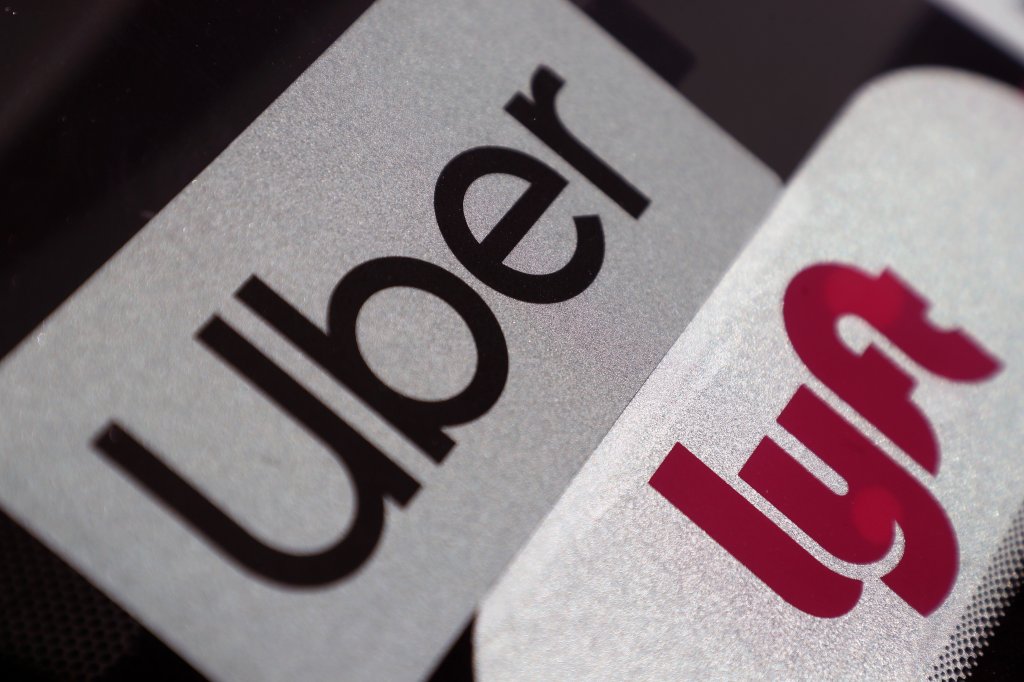Ride-hailing companies Uber and Lyft are attempting to escape paying for unemployment benefits for drivers who are unable to work because of the coronavirus pandemic, critics of the firms say.
The $2 trillion coronavirus rescue and stimulus plan passed by Congress and signed March 27 by President Donald Trump will extend unemployment benefits and provide a special $600-per-week pandemic payment to workers, including ride-hailing drivers who were previously ineligible for benefits because employers say they are contractors rather than employees, California officials said this week.
For Uber and Lyft drivers, the expansion comes at a time of massively reduced ride-hailing demand caused by shelter-in-place orders, said Harry Campbell, who publishes a blog and newsletter followed by tens of thousands of ride-hailing drivers. Campbell estimates there are 400,000 to 500,000 Uber and Lyft drivers in California.
“The number one question in my inbox right now from drivers across the country is how to file for unemployment insurance,” Campbell said in an email.
Both Uber and Lyft pushed to have their drivers included in the federal rescue package. But critics note the firms have not paid into the Unemployment Insurance program, which is funded by employers, for those drivers because they consider them contractors, not employees.
The companies are seeking to “fork over their responsibilities” to pay for unemployment benefits for drivers, said Shannon Liss-Riordan, a lawyer suing Uber and Lyft on behalf of drivers seeking sick pay amid the pandemic. Liss-Riordan noted that both San Francisco ride-hailing giants have reported large financial reserves. Uber said in its 2019 annual report that it had $10.9 billion in cash, and Lyft said it had $358 million.
Uber said in a statement that labor laws force a choice between flexibility for workers and employment protections. “Rather than restricting independent work, we should strengthen the protections and benefits afforded to it,” Uber said.
Lyft said in a statement that the “vast majority” of its drivers “use it to earn supplemental income, driving fewer than ten hours per week” and that some have other full- or part-time jobs that offer benefits, including unemployment coverage.
Both companies have each put at least $30 million into a campaign to bring a ballot initiative to California voters this year that would exempt the ride-hailing firms from the law AB-5, which went into effect January 1 and mandates a strict test to determine whether an employee is an employee or contractor. Uber in December sued the State of California over the law.
Lyft’s response represents “a complete deflection,” said Veena Dubal, a law professor at UC Hastings Law in San Francisco. “Lyft is saying, ‘It doesn’t matter that we’re not paying into the fund.’”
Lyft said in its statement that it had “fought for drivers to receive direct aid in the Congressional stimulus package.” Uber CEO Dara Khosrowshahi also pushed for direct aid to drivers, writing a letter to Trump, before passage of the rescue bill, asking that the plan “include protections and benefits for independent workers, not just employees.”
Unemployment Insurance, paid for by employer contributions, was created by federal law and is administered by states. The employer contributions go into a trust fund from which unemployed workers are paid. In California, with unemployment benefits now expanded to ride-hailing drivers, the state will have to try to make Uber and Lyft pay for benefits their drivers receive, Dubal said.
On Friday, the U.S. Department of Labor issued a guidance document for the “CARES Act” coronavirus rescue package, noting that the Unemployment Insurance program is facing unprecedented demand. The rescue package stretches unemployment coverage to 39 weeks from 26, and adds $600 per week for pandemic-related unemployment through July 31, the document said.
California’s Employment Development Department had fairly early on in the coronavirus outbreak urged people — including drivers and other gig workers — to apply for unemployment benefits even if they weren’t sure they qualified. The California Legislative Analyst’s Office advised in a bulletin this week that the rescue package includes unemployment coverage for all self-employed workers who can’t work because of the pandemic.
Unemployment insurance payments in California, based on earnings, range from $40 to $450 per week. The average benefit in California was $330 per week in 2019, according to state government data. Self-employed workers can request unemployment benefits retroactively to January 27, the legislative analyst’s office said.









